Jheronimus Bosch, Triptych of the Temptations of St. Anthony (detail), circa 1500. Oil on the table. Lisbon, Museu Nacional de Arte Antiga © DGPC/Luísa Oliveira
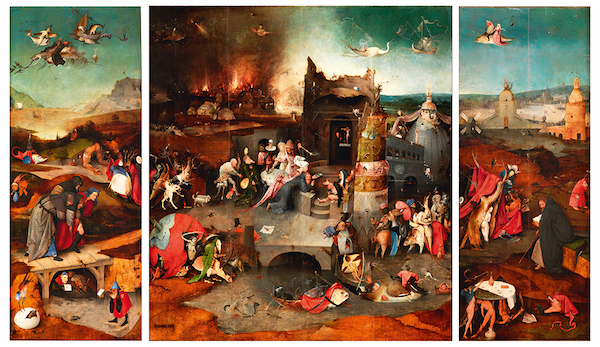
Jheronimus Bosch, Triptych of the Temptations of Saint Anthony, around 1500. Oil on the table. Lisbon, Museu Nacional de Arte Antiga © DGPC/Luísa Oliveira
From 9 November to 12 March 2023, around 100 works will trace the portrait of a singular and mysterious artist, on whom experts have never stopped debating, and of the passions he has managed to ignite from the sixteenth century to today, influencing great masters, attracting prestigious collectors and giving life to a widespread taste that authorizes us to speak of a real “Bosch phenomenon”. The fascinating thesis of the curators is that the Flemish painter, so different from the other great European artists of his time, is the emblem of an “alternative” Renaissance, light years away from the humanist and classicist ideals of the fifteenth century, and therefore proof of the existence of a plurality of Renaissances, each with its own characteristics and its own center of gravity. Another founding hypothesis is the idea that the “Bosch phenomenon” was not born in Flanders, the artist’s homeland, but in the Mediterranean world, and precisely between Spain and Italy in the sixteenth century.
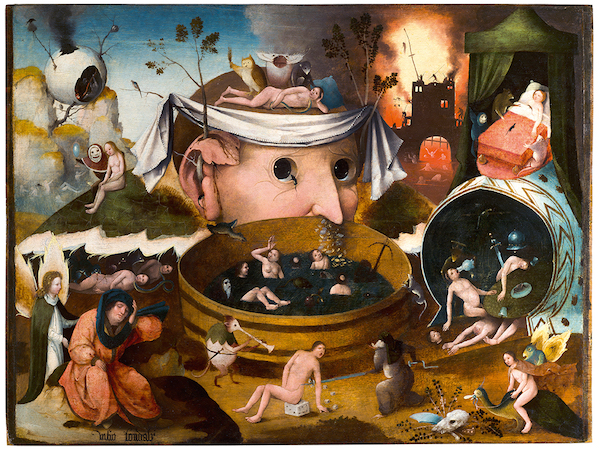
Workshop of Jheronimus Bosch, The Vision of Tundalo, circa 1490-1525. Oil on the table. Madrid, Lázaro Galdiano Museum © Lázaro Galdiano Museum, Madrid
Precisely for this reason, the Milanese exhibition is not a traditional monograph, but a fluid dialogue between the works of Bosch and those of Flemish, Italian and Spanish masters, which highlight how “the other Renaissance” subsequently influenced artists of different backgrounds, from Titian to Raphael, from Gerolamo Savoldo to El Greco. Along the way we find paintings, sculptures and engravings, but also tapestries, ancient volumes and rare objects from the wunderkammer of wealthy collectors. Among Bosch’s masterpieces, the monumental stands out Triptych of the Temptations of St. Anthony from the Museu Nacional d’Arte Antiga in Lisbon, never exhibited in Italy, which in the course of the twentieth century left Portugal only twice, while the Triptych of the Final Judgment, formerly in the collections of the Venetian cardinal Marino Grimani. Other extraordinary loans have come from the Prado Museum, from and from the Làzaro Galdiano Museum in Madrid and from the Gallerie dell’Accademia in Venice.
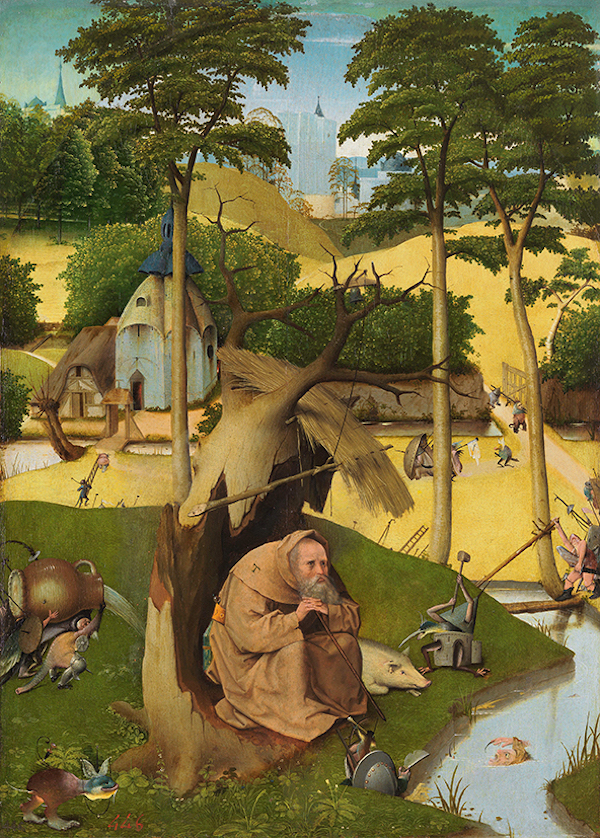
Jheronimus Bosch, The Temptations of Saint Anthony, circa 1500. Oil on the table. Lisbon, Museu Nacional de Arte Antiga © DGPC/Luísa Oliveira
Unprecedented is the exhibition of the entire cycle of tapestries taken from the works of Bosch, which for the first time combines the four pieces of the Escorial Monastery and the cartoon of the fifth tapestry now lost, preserved in the collections of the Uffizi Galleries: objects precious works of art, authentic status symbols in sixteenth-century Europe, which today bear witness to the success of the Flemish artist among the leaders of the aristocracy of the time.
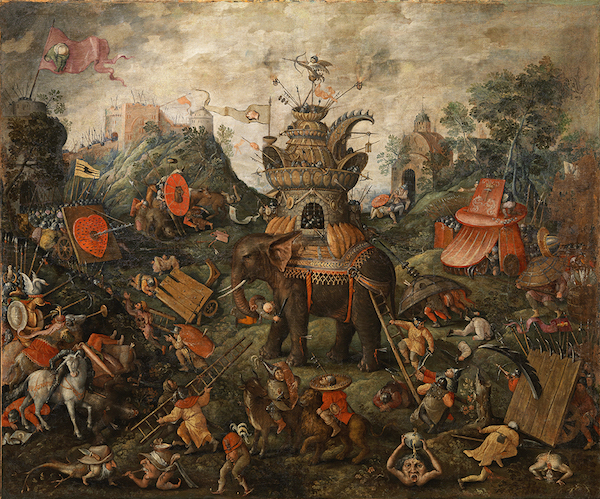
Copy after Jheronimus Bosch, Scene with elephant, 16th century. Oil painting on canvas. Florence, Uffizi Galleries © Photographic Department of the Uffizi Galleries
Engravings, starting with those of Pieter Bruegel the Elder, were instead the main medium through which Bosch’s fantastic and nocturnal imagery traveled across the continent, and even across the Atlantic. Finally, in the courts of the 16th and 17th centuries, the bizarre taste of the Flemish artist harmonized perfectly with the spirit of the wunderkammer: we’ll find out in the last room of Bosch and another Renaissanceset up just like a chamber of curiosities, where rare and precious objects evoke the atmospheres of Bosch’s most famous masterpiece, the Triptych of the Garden of Earthly Delights. 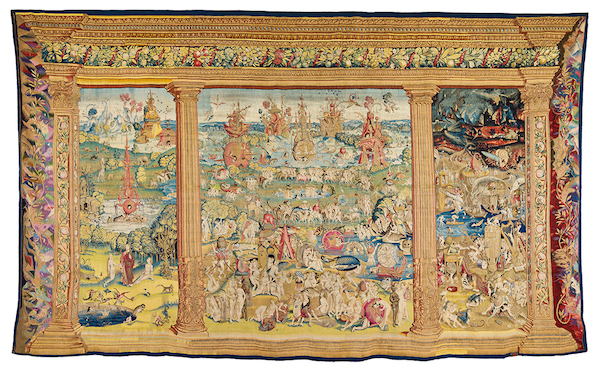
Manufacture of Brussels, The Garden of Earthly Delights, circa 1550-1570. Tapestry. Madrid, Patrimonio Nacional, Palacio Real © Patrimonio Nacional, Madrid

